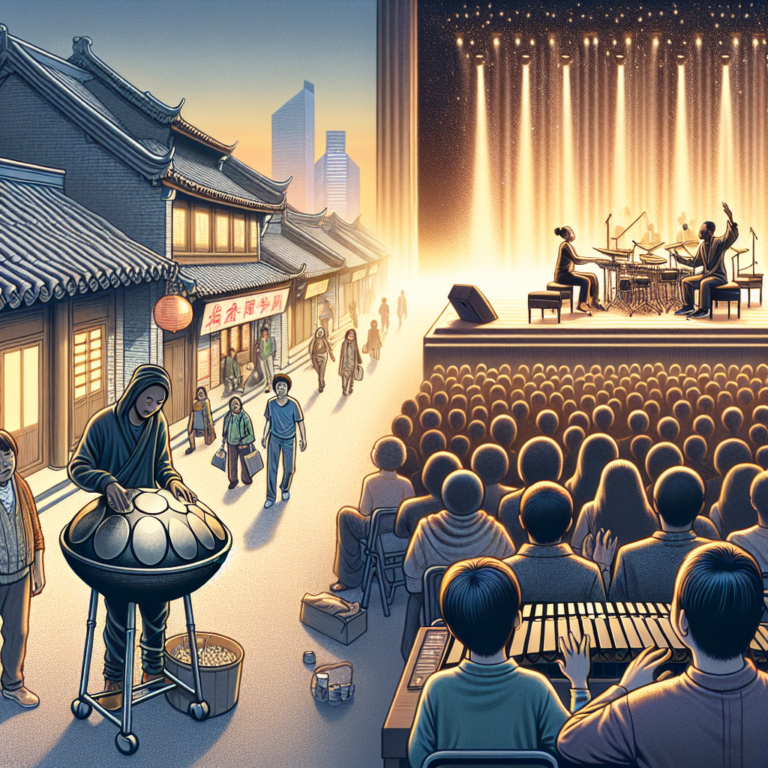Over the past few decades, a unique and mesmerizing instrument has been steadily gaining popularity in the music world. The handpan, a steel drum-like instrument with a distinctive melodic sound, has moved from being a niche instrument performed on the streets to a mainstream presence in concert halls and music studios around the world.
The handpan originated in the early 2000s as a modern reinvention of the steel pan drum, which has its roots in the Caribbean. The instrument is made from two half-shells of steel that are glued together, creating a resonant chamber. The top of the handpan is hammered with a series of indentations that produce a wide range of tones when struck with the hands or fingers.
Initially, the handpan was primarily played by buskers and street performers looking to add a unique element to their performances. Its ethereal, almost otherworldly sound quickly captured the attention of listeners, and videos of street musicians playing the instrument began to go viral online. As a result, interest in the handpan grew exponentially, and makers around the world began crafting their own versions of the instrument.
Today, the handpan has found a home in the music industry, with musicians incorporating the instrument into a wide range of genres, from classical and jazz to folk and world music. Its soothing, meditative sound has made it a popular choice for composers and producers looking to add a touch of tranquility to their compositions.
One of the key factors in the rise of the handpan has been its accessibility. Unlike traditional instruments that require years of practice to master, the handpan is relatively easy to learn and play, making it ideal for beginners and seasoned musicians alike. Its portability also makes it a popular choice for musicians on the go, who can easily take it with them to performances and jam sessions.
In recent years, the handpan has graced the stages of some of the world’s most prestigious concert halls, with renowned musicians like Manu Delago and Hang Massive bringing the instrument to the forefront of the music scene. Its popularity has also led to the formation of dedicated handpan festivals and workshops, where enthusiasts can come together to learn, share, and celebrate this unique instrument.
With its enchanting sound and universal appeal, the handpan shows no signs of slowing down in its ascent to musical stardom. Whether played on the streets or in a grand concert hall, this humble instrument continues to captivate audiences and inspire musicians around the world. The rise of the handpan in the music industry serves as a testament to the power of music to transcend boundaries and bring people together in harmony and joy.

